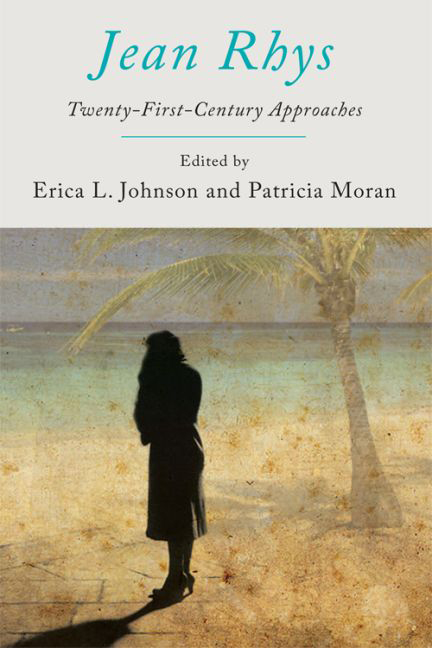Book contents
- Frontmatter
- Contents
- List of Figures
- Acknowledgements
- Notes on Contributors
- Introduction: The Haunting of Jean Rhys
- PART I Rhys and Modernist Aesthetics
- 1 Jean Rhys and Katherine Mansfield Writing the ‘sixth act’
- 2 Making a Scene: Rhys and the Aesthete at Mid-Century
- 3 On the Veranda: Jean Rhys's Material Modernism
- PART II Postcolonial Rhys
- PART III Affective Rhys
- Bibliography
- Index
3 - On the Veranda: Jean Rhys's Material Modernism
from PART I - Rhys and Modernist Aesthetics
Published online by Cambridge University Press: 12 September 2017
- Frontmatter
- Contents
- List of Figures
- Acknowledgements
- Notes on Contributors
- Introduction: The Haunting of Jean Rhys
- PART I Rhys and Modernist Aesthetics
- 1 Jean Rhys and Katherine Mansfield Writing the ‘sixth act’
- 2 Making a Scene: Rhys and the Aesthete at Mid-Century
- 3 On the Veranda: Jean Rhys's Material Modernism
- PART II Postcolonial Rhys
- PART III Affective Rhys
- Bibliography
- Index
Summary
they have drifted to the edge
of verandahs in Whistlerian
white, their jungle turned tea-brown […]
Derek Walcott, ‘Jean Rhys’ (1980)
Derek Walcott's homage to Jean Rhys pictures her a child in a deteriorating sepia photograph having ‘drifted’ with her aunts to the ‘edge / of verandahs’. One aunt ‘canoes through lilies of clouds’ from a ‘Carib hammock’, while the child, sighing, stares at a candle flame, ‘her right hand married to Jane Eyre’. In the concluding lines, the child foresees ‘that her own white wedding dress/ will be white paper’ (427–9). The ekphrastic poem gestures to multiple stories untold in its main narrative and offers glimpses of these stories through the material objects it names – beginning with the photograph itself and simultaneous reference to James MacNeill Whistler's portraits of girls in white; including the picture album, the hammock, the candle with its flame, the novel; and ending with the prophetic white paper, signalling the future of the Euro-creole woman writer. We might read Walcott's poem as a guide to reading Rhys, in particular the materiality of her modernism interleaved with a dreamy liminality of time and representational space. One place it suggests we tour in this reading is the veranda.
This chapter focuses on the veranda in Rhys's writing as an architectural space that opens onto multiple stories, its material history embedded within five centuries of inter-imperial conflict and expansion, colonial settlement, the Middle Passage, the plantation and the plantation's legacies in twentieth-century England and Europe. Defined by the OED as ‘an open portico or light roofed gallery extending along the front (and occas[ionally] other sides) of a dwelling or other building’, the word itself has Spanish or Portuguese origins with versions in Hindi, Bengali and modern Sanskrit. As a creolised architectural form, the veranda speaks to global circuits stretching from its origins in West Africa and India through Europe and the Americas, with the Caribbean as a central point of transit. In Rhys's writing – several short stories including ‘Mixing Cocktails’, the novels Voyage in the Dark, Good Morning, Midnight and Wide Sargasso Sea – the veranda changes its form and goes by different names. These shifting shapes of the veranda open to view obscured areas of the Caribbean past and connect distant, conflicting worlds.
- Type
- Chapter
- Information
- Jean RhysTwenty-First-Century Approaches, pp. 59 - 82Publisher: Edinburgh University PressPrint publication year: 2015



